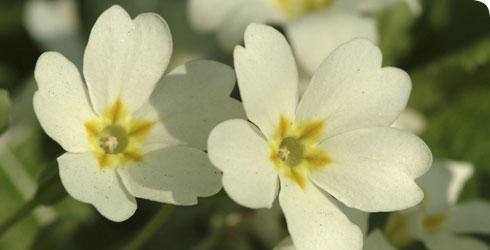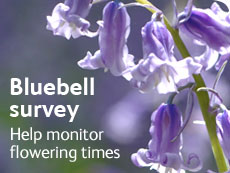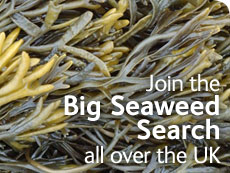Other public surveys
Whether you are interested in insects, birds, reptiles or amphibians, find out how you can help the UK's experts to map the biodiversity of the UK.
As well as the surveys that the Museum runs, there are many other national wildlife surveys happening all over the UK. Here are some examples that you can take part in. We will update this list as new ones launch.
-

Big Butterfly Count
Butterflies are important pollinators and vital to the food chain. Help the charity Butterfly Conservation find out about the distribution of butterflies in the UK's towns and countryside.
-

Flying ant survey
Each summer flying ants take to the air in a coordinated mating ritual. To learn more about this phenomenon, the Society of Biology are asking people to report their sightings.
-

OPAL tree health survey
Find out about the threats facing our trees’ health and provide scientists with vital information about pests and diseases affecting oak, ash and horse chestnut trees.
-

Conker Tree Science
Our conker trees (horse chestnuts) are under attack by invading moths. Help scientists in their mission to find out how far these alien invaders have spread and how well birds and other insects are controlling them.
-

Ancient tree hunt
What are ancient trees and why are they such perfect homes for other plants, animals and fungi? Find out the answers from the Woodland Trust and help them map the distribution of ancient trees in Britain.
-

OPAL Bugs Count
Invertebrates play a vital role pollinating plants, recycling nutrients and providing food for birds. But which habitats do they prefer and how does the built environment affect them? Help scientists find out.
-

OPAL biodiversity survey
Join in the OPAL biodiversity survey and discover the diverse range of wildlife that hedges support.
-

OPAL water survey
Take part in the OPAL water survey and help scientists learn more about how polluted our lakes and ponds are - something we know surprisingly little about.
-

Riverfly Monitoring Initiative
Anglers and other groups interested in conserving river environments can help by monitoring the quality of their local waters. Find out about the initiative and how to join.
-

OPAL air survey
Find out how much pollution there is in your local area by looking for lichens, which are natural indicators of air pollution.
-

OPAL earthworm survey
Earthworms play a vital role in recycling plant nutrients and aerating the soil, but scientists still have a lot to learn about them. Help them find out more by joining the earthworm hunt in your local park or garden.
-

Great Stag Hunt
The stag beetle is a protected species in the UK, following its extinction in many European countries. Help find out if its numbers are stable in the UK by joining the Great Stag Hunt.
-

Oil beetle survey
Oil beetles are under threat in the UK and have been identified as priorities for conservation action. Help conservation efforts by recording your sightings.
-

Plant pest surveys
The Royal Horticultural Society wants you to help track 4 invasive insect species that are pests of British plants.
-

Dragonfly Recording Network
The dragonfly fauna of Britain is changing. Help the British Dragonfly Society gather up-to-date information about the distribution of British dragonflies and damselflies by recording species in your area.
-

Great Nut Hunt
Britain’s only native dormouse species, the hazel dormouse, is now rare in the UK. By searching for nibbled hazel nuts you could help identify woods where they still occur.
-

The harlequin ladybird survey
The harlequin ladybird is the most invasive ladybird species on Earth and it arrived in Britain in 2004. By taking part in this survey you can help to monitor its spread across Britain.
-

BirdTrack survey
Find out how you can help fill gaps in scientists' knowledge about birds in the UK. You can record information online about your bird sightings, from common garden birds to rare migrants.
-

Plantlife Wildflowers Count
Help scientists find out how healthy the countryside is, by monitoring common wildflowers. You will not only be helping plants but also the insects and other invertebrates that depend on them.
-

Reptile and amphibian surveys
The National Amphibian and Reptile Recording Scheme runs a number of surveys. Seek out rare visitors to your local area, like the adder and great-crested newt, or spot more regular ones like the common frog.
-

Hedgehog survey and project
Hedgehog populations are declining in some parts of the UK. Record your sightings in the Hogwatch survey to help track populations and join in the Hedgehog Street project to find out positive actions you can take.
-

Recording Invasive Species counts (RISC)
Help record the distribution of non-native animal and plants that have been brought into the UK which have a negative impact on native wildlife.
-

RSPB Swifts survey
Numbers of swifts have dropped dramatically in the past 10 years and they are now officially a Conservation Concern. Help scientists to help them by telling the RSPB about any swifts you see.
Nature groups

If you run a natural history society or wildlife recording scheme, join Nature Groups Near You and attract new members.
Citizen science project guide

Scientists at the Museum's Centre for UK Biodiversity and the Biological Records Centre have produced a practical guide to setting up citizen science projects to study biodiversity and the environment.
Guide to citizen science PDF (3.4 MB)


